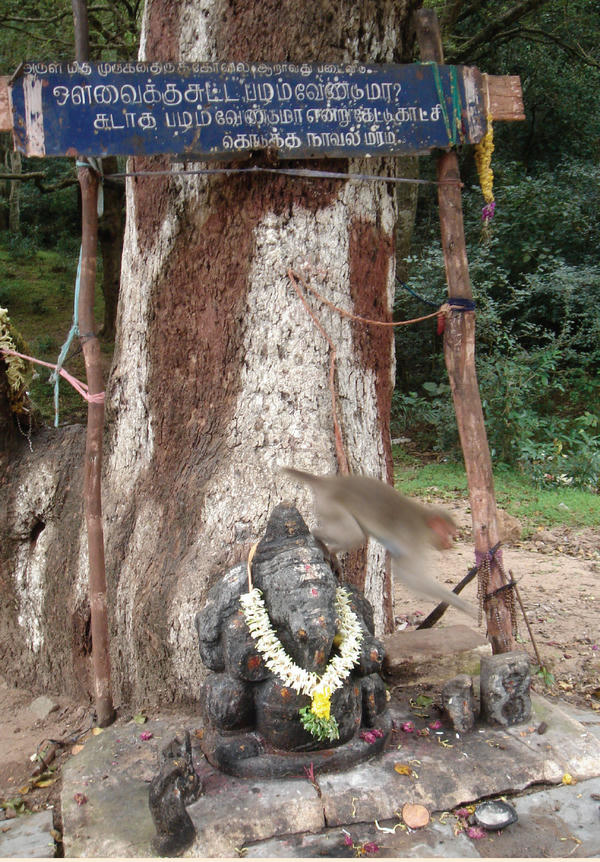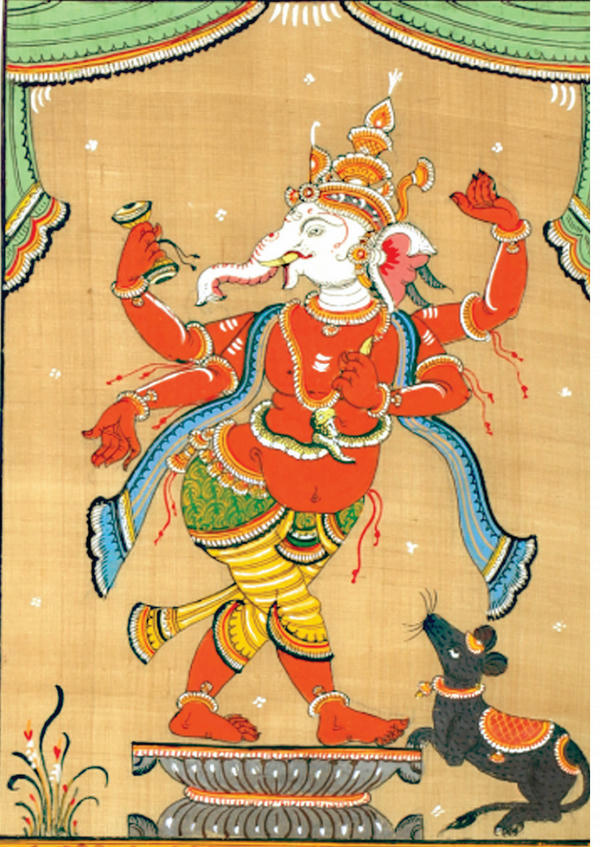Sanskrit Pronunciation§
Saṅskṛitam Uccāraṇam§
संस्कृतम् उच्चारणम्§
VOWELS§
Long vowels (marked like ā) are sounded twice as long as short vowels. The four dipthongs, e, ai, o, au, are always sounded long, but never marked as such.§
अ§ |
a§ |
like the u in “but” or the a in “about”§ |
आ ा§ |
ā§ |
like the o in “bot” or the a in “father”§ |
इ ि§ |
i§ |
like the i in “fill” and “bit”§ |
ई ी§ |
ī§ |
like the ee in “feel” and “beet”§ |
उ ु§ |
u§ |
like the u in “pull” and “full”§ |
ऊ ू§ |
ū§ |
like the oo in “pool” (contrast with the short u in full)§ |
ऋ§ |
ṛi§ |
(ṛ in mantras) like the ri in “rig”§ |
ॠ§ |
ṛī§ |
(ṝ in mantras) like the ree in “reed”§ |
ऌ§ |
ḷ§ |
like the lry in “jewelry”§ |
ए े§ |
e§ |
like the a in “gate” or the e in “prey”§ |
एै ै§ |
ai§ |
like the “I” in “I’m” or the ai in “aisle”§ |
ओ ाे§ |
o§ |
like the o in “wrote” and “stone”§ |
अाै ाै§ |
au§ |
like the ou in “loud” or like the o in “cow”§ |
GUTTURAL CONSONANTS§
Sounded in the throat.§
क्§ |
k§ |
like the k in “skate” (initial “s” softens the letter which is normally aspirated in English)§ |
ख्§ |
kh§ |
like the k in “kate” or kh in “inkhorn”§ |
ग्§ |
g§ |
like the g in “gate” or “go”§ |
घ्§ |
gh§ |
like the gh in “doghouse”§ |
ड़§ |
ṅ§ |
like the n in “sing”§ |
PALATAL CONSONANTS§
Sounded at the roof of the mouth.§
च्§ |
ch§ |
(c in mantras) like the ch in “church” (with less air than is usually spoken in English)§ |
छ्§ |
çh§ |
(ch in mantras) like the ch in “chain” (using more breath than the last example)§ |
ज््§ |
j§ |
like the j in “jump”§ |
झ्§ |
jh§ |
like the geh in “hedgehog” or like the j in “jump” (using more breath than the last example)§ |
ञ्§ |
ñ§ |
like the n in “cinch”§ |
CEREBRAL CONSONANTS§
Pronounced with the tongue touching the roof of the mouth behind the teeth. These are also known as retroflex.§
ट्§ |
ṭ§ |
like the t of “start”§ |
ठ्§ |
ṭh§ |
like the t of “tart” or the th of “anthill”§ |
ड्§ |
ḍ§ |
like the d of “dart”§ |
ढ्§ |
ḍh§ |
like the dh of “madhouse”§ |
ण््§ |
ṇ§ |
like the n in “tint”§ |
DENTAL CONSONANTS§
Sounded with the tip of the tongue at the back of the upper front teeth.§
त्§ |
t§ |
like the t of “start”§ |
थ्§ |
th§ |
like the t of “tart” or the th of “anthill”§ |
द्§ |
d§ |
like the d of “dart”§ |
ध्§ |
dh§ |
like the dh of “madhouse”§ |
न्§ |
n§ |
like the n in “tint”§ |
LABIAL CONSONANTS§
Sounded at the lips.§
प्§ |
p§ |
like the p in “spin”§ |
फ्§ |
ph§ |
like the p in “pin or path”§ |
ब्§ |
b§ |
like the b in “bin”§ |
भ्§ |
bh§ |
like the bh in “labhouse”§ |
म्§ |
m§ |
like the m in “mumps”§ |
SEMIVOWELS§
य्§ |
y§ |
(palatal)like the y in “yellow”§ |
र ्§ |
r§ |
(cerebral) similar to the r in “drama” but ideally with a slight roll§ |
ल्§ |
l§ |
(dental) like the l in “lug” or “law”§ |
व्§ |
v§ |
(labial)between the v of “vile” and w of “wile”§ |
SIBILANTS§
श्§ |
ś§ |
(palatal) similar to the sh in “sheep” or “shine”§ |
ष्§ |
sh§ |
(cerebral) (ṣ in mantras) similar to the c in “efficient” or the sh in “shut”§ |
स्§ |
s§ |
(dental) like the s in “so” or “saint”§ |
ASPIRANT§
ह्§ |
h§ |
like the h in “hero” (more breathy than the normal English “h”)§ |
ANUSVĀRA \ (ṁ)§
Represents the nasal of the type of letter it precedes; e.g.: अंग = aṅga. Transliterated as ṁ, or the actual nasal, e.g., ñ. At the end of words it is often म् (m).§
AYOGAVAHA “ ग्ं§
An accentuated Vedic form of anusvāra preceding र ष श स ह. It is transliterated as gṁ.§
VISĀRGA (:) Ḥ§
Pronounced like huh (with a short, stopping sound), or hih, after i, ī and e.§
AVAGRAHA %§
Marks the deletion of initial a after e or o (because of sandhi). Thus: तेऽबुवन§
DAṆḌA§
M marks end of sentence.§
MM marks end of stanza.§
SPECIAL CHARACTERS§
ज् (ज + ञ) jñ …a nasalized sound, like gya or jya.§
क्ष (क + ष) ksh (kṣ in mantras)§
CONVENTIONS§
1. In summary, IAST transliteration is followed in mantras (with dot above m for anusvara, rather than below). Other text in the book follows the following exceptions:§
च् = c, छ = ç, च््च् = cch§
ष् = sh, ऋ = ṛi,§
2. Geographical and person names, e.g., Himalaya, are generally given without diacriticals.§

